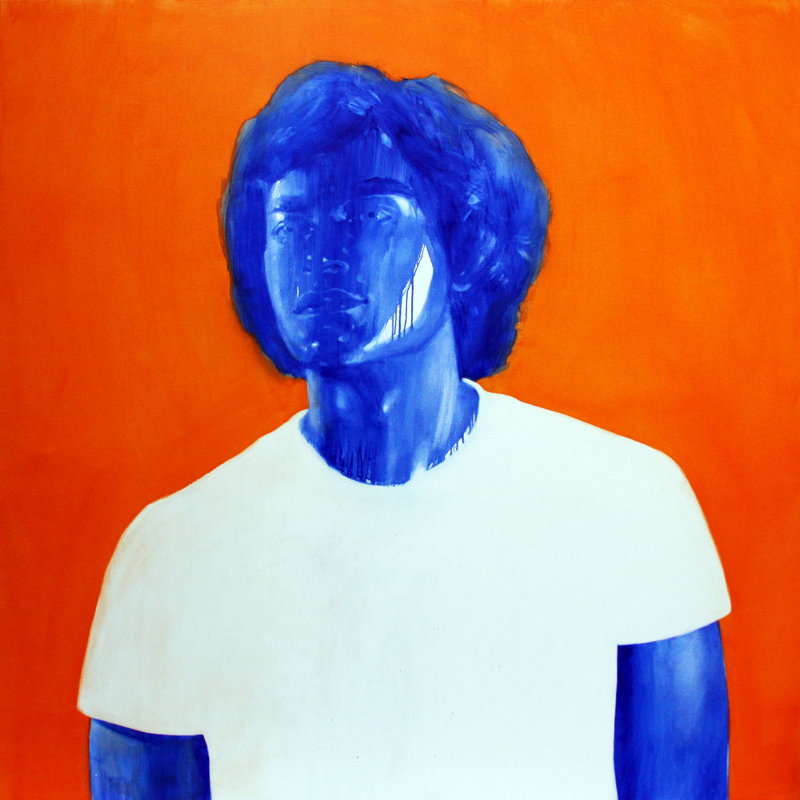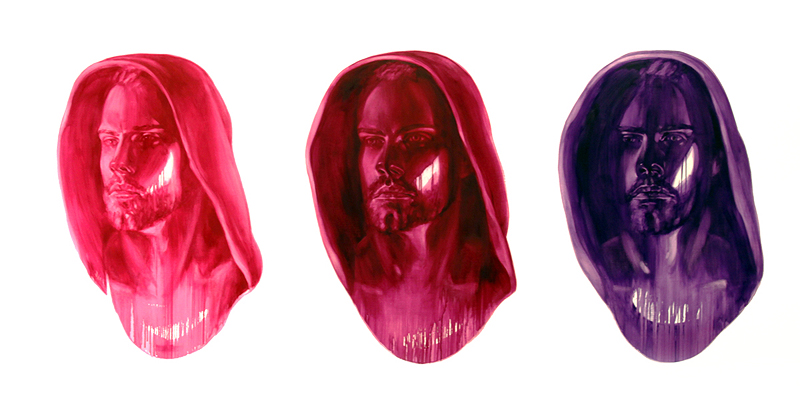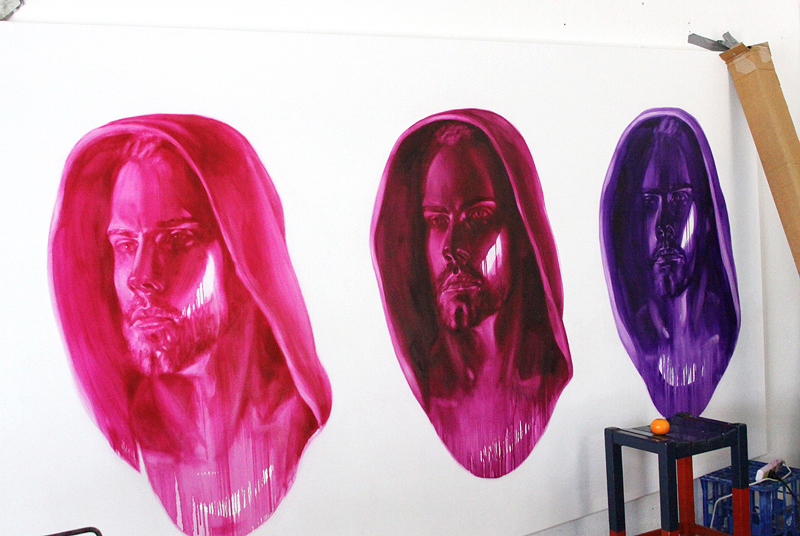
Visual Brand Identity
Materials: Oil on linenDimensions (cm): 184 x 184
Year: 2011

Brand Truth
Materials: Oil on linenDimensions (cm): 184 x 184
Year: 2011

genesis
Materials: Oil on linenDimensions (cm): 184 x 184
Year: 2010

THE HOODY TRILOGY
Materials: Oil on linenDimensions (cm): 180 x 340
Year: 2012

THE HOODY TRILOGY
Materials: Oil on linenDimensions (cm): 180 x 340
Year: 2012

Trademark
Materials: Oil on linenDimensions (cm): 180 x 340
Year: 2010
visual brand identity Series
PAINTINgConsumerism equates personal happiness with consumption and the purchase of material possessions. Ironically the instant high of buying can create a contemporary melancholy and attitude of disaffection in the consumer. This cycle of economy driven instant gratification leads to a culture of people purchasing goods and consuming materials in excess of their basic needs.
Madeline Levine has criticized the increased dominance of consumerism especially within Western culture for creating “a shift away from values of community, spirituality, and integrity, and toward competition, materialism and disconnection.” [1]. Consumerism’s constant and relentless message to devour ever more products and services aided by the tools of branding, marketing and advertising have created an emotional abyss within culture and a fractured sense of self within the individual.
In this context we are reduced to marketing statistics where our value is based upon our buying power. Personal happiness becomes dependant on consumer choice. Consumerism tricks the self into detaching from any real emotional engagement and instead opts for artificial simulation and endless reproductions of fundamentally empty appearance. We become stranded in a hyperreal world.
My recent body of work focuses on depicting the alienation and contemporary melancholy of the individual in relation to the constructed images of branding, marketing and advertising used in the service of big business to promote consumerism.
Advertising typically tends to use young models to sell their products. This is clearly evident in the advertisements for Calvin Klein, Nike, Benetton, Apple and Adidas and a plethora of other brands. The models used are often depicted as being cool, happy, sexy and sophisticated with the implication that if you buy these products then you will obtain these characteristics too.
In advertising imagery the models become objectified, degraded and consumable throw-aways in a disposable culture. Their humanity and sense of self is lost in the process of selling product. My work seeks redress this imbalance and as such the style and use of colour are important aspects of my practice.
Firstly, the painting style is physical, loose and expressive with the models unraveling, disintegrating and dissolving into the surrounding space. The gesture and painterly mark indicate a return of humanity and spirit in the work that is lost in the actual imagery of advertising. Moreover the spontaneous style comments upon the speed with which advertising imagery is generated, consumed and quickly discarded.
Secondly, the use of high key, luminous colour conveys a sense of the spiritual. Roland Barthes elaborates on this “Colour …is a kind of bliss…like a closing eyelid, a tiny fainting spell”. [2] Furthermore the saturated colour reflects the highly saturated nature of mass media culture.
The subjects of my work dwell in shifting worlds, caught momentarily between the flat, two-dimensional surface of the canvas and a three dimensional illusion. The loose style and use of colour will convey a sense of spontaneity and chance and by implication an implicit humanity for the individual in these paintings, feelings that are lost in mass-produced advertising campaigns that they mimic. The individual quality of the painting technique will imply the individual nature of the consumer and convey a return to the spiritual, the existential and sublime in art.
1. Levine M, Challenging the Culture of Affluence, Independent School. 2007, p28-36.
2. Batchelor, D Chromophobia, Reaktion, London 2000, p32.
Dimensions (cm): 184 x 184
Year: 2010 -2011